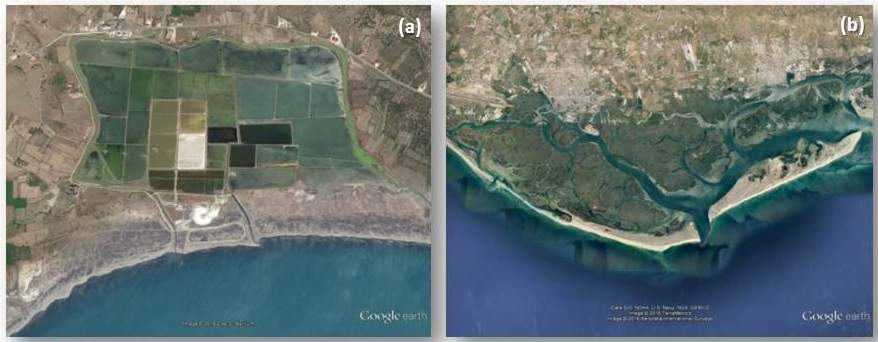Coastal Metacommunities
Niche or neutral processes : What drives diversity and productivity of coastal metacommunities?
Here we are exploring the extent that neutral or niche processes drive the diversity of coastal metacommunities. We use phytoplankton as our model system and we fuse/compare measures resulting from classical microscopic identification techniques with those from recently proposed molecular methodologies (e.g. ILLUMINA).
In the framework of the ECOGENE project, we address these questions using a range of spatial scales and employ approaches including: large-scale field sampling (fig 1a), field mesocosms (fig 1b) and experimental laboratory microcosms (fig 1c).

Figure 1. Large-scale field monitoring of phytoplankton assemblages across gulfs in the Aegean Sea, Greece (panel a), field mesocosms deployed within ponds of different salinity levels in a salt production site (panel b), and experimental laboratory microcosms (panel c).
Dispersal or disturbance?
The impacts of fragmentation and connectivity on the structure and function of aquatic metacommunities are a focus in current ecological research and are directly relevant to ecosystem management efforts concerned with the effects of changing sea water levels and terrestrial nutrient inputs.
We investigate these issues using both experimental and modelling approaches. Experiments consist of self-organised natural marine phytoplankton assemblages under different nutrient pulsing frequencies, and then connected at a dispersal continuum to form metacommunities. Our findings of the self-organization process are coupled with numerical simulations taking into account the functional traits of species in order to explain assembly processes under pulsed resource inflows.
So far, findings from our research revealed that optimal ecosystem function (maximal richness, functional diversity, and productivity) in heterogeneous aquatic metacommunities can be achieved when the interval between resource pulses exceeds the generation times of constituent species, and when patches are connected at intermediate connectivity levels (Smeti et al. 2016, Oikos).
This research is relevant for coastal metacommunities such as ecologically important salt-production sites (fig. 2a), interconnected lagoons and salt marshes (fig. 2b), as well as rock pools.

Figure 2. Coastal metacommunities to which findings from our research apply.
Collaborators
Evangelia Smeti, https://www.researchgate.net/profile/Evangelia_Smeti
George Tsirtsis, http://www.mar.aegean.gr/people/cv/gtsirtsis.php
Daniel Roelke, http://people.tamu.edu/~droelke/Roelke_Lab_3/Welcome.html
Alexandra Meziti, https://www.researchgate.net/profile/Alexandra_Meziti
Kostantinos Kormas, https://sites.google.com/site/kkormas/
Daniel Danielidis, http://en.biol.uoa.gr/departments/department-of-ecology-systematics/danielidis-daniel.html
Publications
Smeti et al 2016, Oikos 125 (6): 812-820, DOI: 10.1111/oik.02684
Roelke, D. L., and Spatharis, S. (2015) Phytoplankton succession in recurrently fluctuating environments. PLoS ONE, 10(3), e0121392. (doi:10.1371/journal.pone.0121392) (PMID:25803437) (PMCID:PMC4372531)
Roelke, D. L., and Spatharis, S. (2015) Phytoplankton assemblage characteristics in recurrently fluctuating environments. PLoS ONE, 10(3), e0120673. (doi:10.1371/journal.pone.0120673) (PMID:25799563) (PMCID:PMC4370464)

